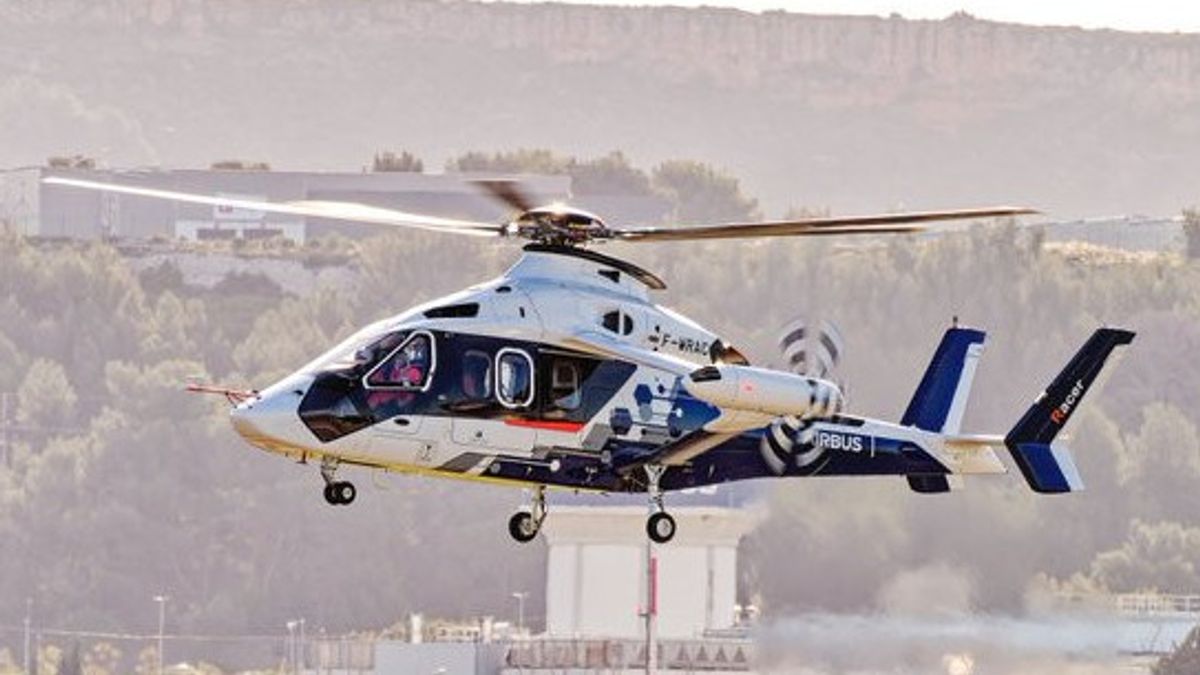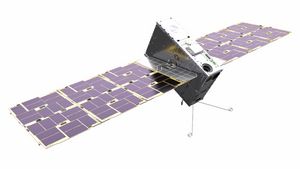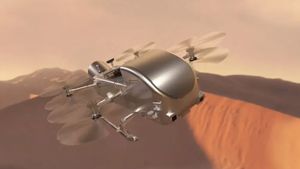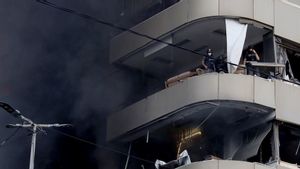JAKARTA - Airbus Helicopters on Wednesday 15 May showcased Racer, a unique demonstrator model that combines traditional overhead rotors with two propellers facing forward, in an effort to combine stability and speed. With an investment of 200 million euros (Rp 3.49 trillion), Racer aims to shorten the response time for critical missions such as search and rescue.
"There is a mission where access as quickly as possible to the zone is very important. We often talk about 'golden hour'," said Airbus Helicopters CEO Bruno Even, quoted by VOI from Reuters, referring to the time window considered the most critical to pay medical attention.
Designs like this could also be offered for military development as NATO conducts a massive study of next-generation helicopters, although much depends on how its planning defines future needs.
Racer, who first flew in April, shot past 150 industry executives, politicians, and representatives from the European Union who had gathered at Airbus Helicopters headquarters in Marignane, southern France, where he had been formed in stages over the past seven years.
Check out the video of the first flight of the European Clean Sky 2 #Racer demonstrator. With the flight campaign officially launched, this 1st flight was a proud moment for everyone at the company as well as for our key partners in 🇪🇺. Together we made it happen!@clean_aviation pic.twitter.com/z8AePheC5U
— Airbus Helicopters (@AirbusHeli) April 26, 2024
Check out the video of the first flight of the European Clean Sky 2 #Racer demonstrator. With the flight campaign officially launched, this 1st flight was a proud moment for everyone at the company as well as for our key partners in arms. Together we made it happen!@clean_aviation pic.twitter.com/z8AePheC5U
Airbus, the world's largest civilian aircraft supplier, has been experimenting with new helicopter designs alongside competitors like Sikorsky from Lockheed, which broke record speeds with X2 helicopter demonstrators more than a decade ago.
Racer is the new successor to Dauphin-based X3 demonstrator Airbus revealed at a nearby high-secretity air base in 2010, which later claimed an unofficial record by beating the Sikorsky X2 speed.
Both designs aim to overcome the flight barriers of high-speed helicopters by combining the advantages of fixed-wing aircraft with standard helicopters. However, there is no consensus on what future helicopters will look like.
SEE ALSO:
Racer's public appearance came months after Italy's Leonardo, and US manufacturer Bell agreed to work together on next-generation tilt-rotor technology, which replaces helicopter-type overhead propellers.
Leonardo also led a separate project to develop the next generation of tilt-rotors for civilian use. AW609 is the only existing civilian design, but has not yet received certification.
Supporters of the tilt-rotors, which rely on side-mounted rotors that can rotate 90 degrees to go up and then move forward, say this allows for higher speed and reach that is suitable for military missions. Criticism says the tilt mechanism reaches higher speeds just at the expense of higher complexity and maintenance costs.
Airbus said Racer would fly at a speed of 220 knots (400 km/h) compared to the traditional helicopter speed approaching 140 knots. Bell said its planned tilt-rotor V-280 Valor, recently selected by the Pentagon, would reach a cruising speed of 280 knots.
The English, Chinese, Japanese, Arabic, and French versions are automatically generated by the AI. So there may still be inaccuracies in translating, please always see Indonesian as our main language. (system supported by DigitalSiber.id)














